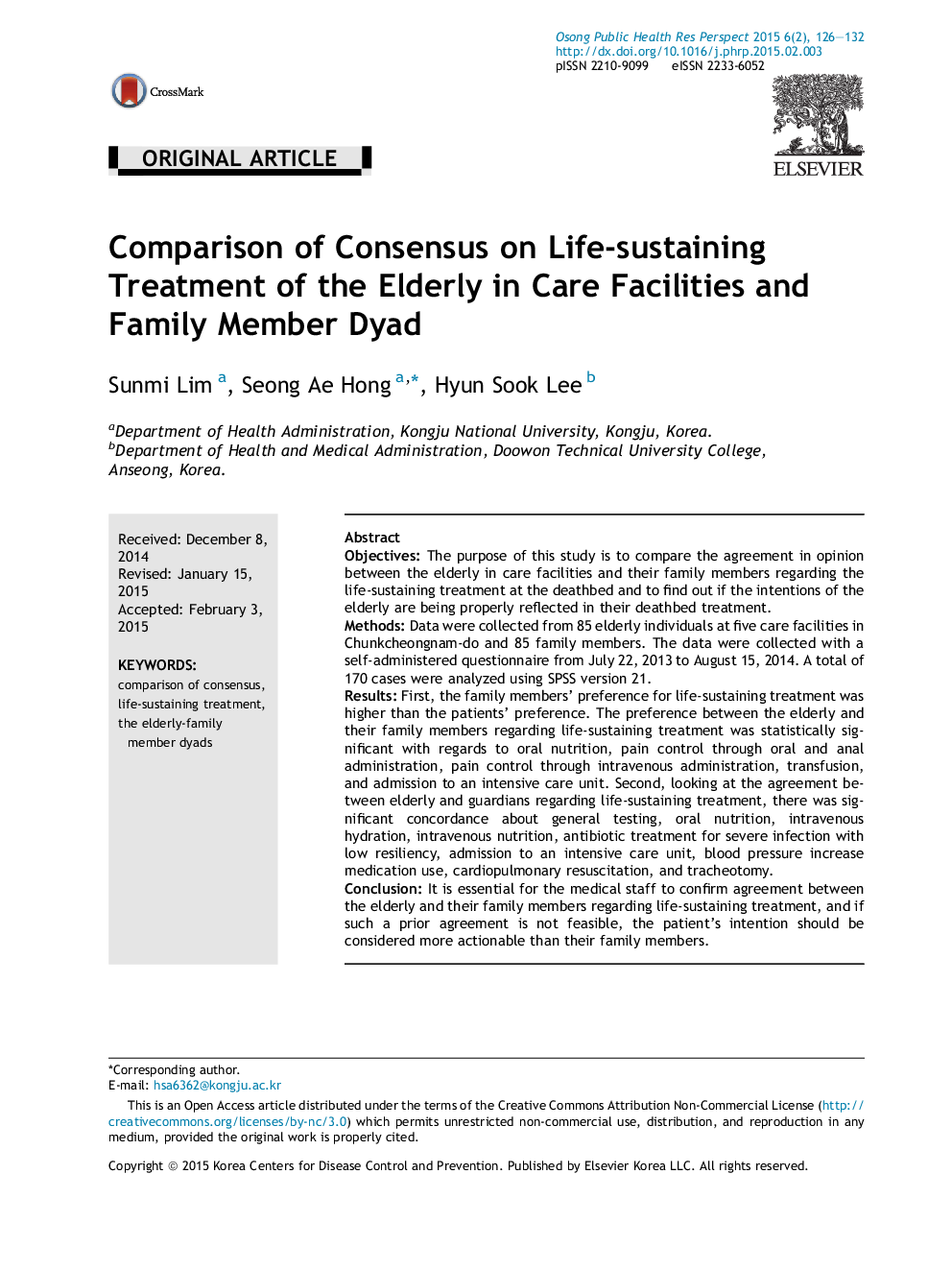| Article ID | Journal | Published Year | Pages | File Type |
|---|---|---|---|---|
| 4201996 | Osong Public Health and Research Perspectives | 2015 | 7 Pages |
ObjectivesThe purpose of this study is to compare the agreement in opinion between the elderly in care facilities and their family members regarding the life-sustaining treatment at the deathbed and to find out if the intentions of the elderly are being properly reflected in their deathbed treatment.MethodsData were collected from 85 elderly individuals at five care facilities in Chunkcheongnam-do and 85 family members. The data were collected with a self-administered questionnaire from July 22, 2013 to August 15, 2014. A total of 170 cases were analyzed using SPSS version 21.ResultsFirst, the family members' preference for life-sustaining treatment was higher than the patients' preference. The preference between the elderly and their family members regarding life-sustaining treatment was statistically significant with regards to oral nutrition, pain control through oral and anal administration, pain control through intravenous administration, transfusion, and admission to an intensive care unit. Second, looking at the agreement between elderly and guardians regarding life-sustaining treatment, there was significant concordance about general testing, oral nutrition, intravenous hydration, intravenous nutrition, antibiotic treatment for severe infection with low resiliency, admission to an intensive care unit, blood pressure increase medication use, cardiopulmonary resuscitation, and tracheotomy.ConclusionIt is essential for the medical staff to confirm agreement between the elderly and their family members regarding life-sustaining treatment, and if such a prior agreement is not feasible, the patient's intention should be considered more actionable than their family members.
